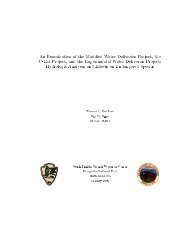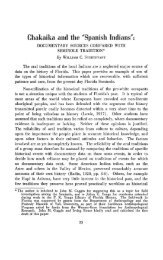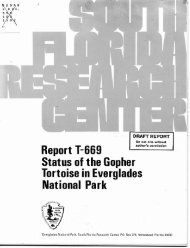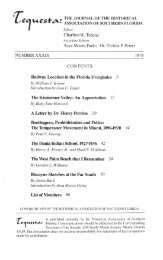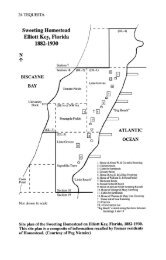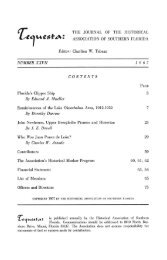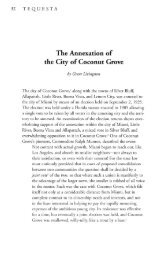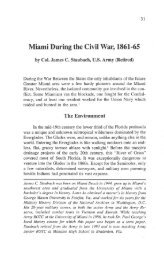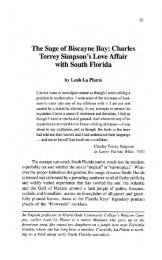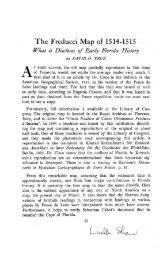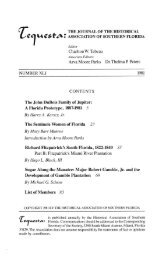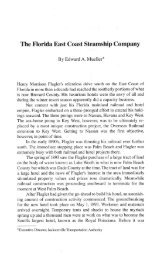Tequesta : Number - 50/1990 - FIU Digital Collections
Tequesta : Number - 50/1990 - FIU Digital Collections
Tequesta : Number - 50/1990 - FIU Digital Collections
Create successful ePaper yourself
Turn your PDF publications into a flip-book with our unique Google optimized e-Paper software.
26 TEQUESTA<br />
Fairchild Tropical Garden Association, for I knew the botanical garden<br />
was growing a number of medemias that eventually would be distributed<br />
to members. When Harold E. Moore, Jr., palm authority of Cornell<br />
University, came to visit us, he looked for the medemia colony as a<br />
signal to slow down in order to turn into our entrance.<br />
The royal palms were grown from seeds collected in the Everglades<br />
National Park by Dan Beard while he was superintendent. They were<br />
planted in the moist swale behind the pond soon after we got settled in<br />
our new house. Twenty years later, visitors found it hard to believe we<br />
had planted these palms ourselves; from their height and diameter of the<br />
trunks the palms appeared to be at least half a century old.<br />
Upon moving to Montgomery Drive, in July, one of the first things<br />
we noted was the hot glare of the late afternoon sun upon our living room<br />
and breezeway. Shade was needed, the sooner the better. I got<br />
permission from Adolph Jordahn, superintendent of the Montgomery<br />
estate, to airlayer three six-foot-long branches of a rubber tree, or<br />
banyan, the same species (Ficus altissima) that forms a tunnel over Old<br />
Cutler Road just south of Cartagena Circle. To create a multipletrunked<br />
tree, of "instant banyan" in character, I dug a large hole with the<br />
help of dynamite and planted the three rooted branches together. With<br />
generous quantities of fertilizer and water, they grew rapidly. Within<br />
two years, they reached a height of 12 feet, while the trunks welded<br />
together characteristic of the banyan. Then we began to discover<br />
banyan roots 30 feet from the tree. Whenever we set out a plant nearby,<br />
the banyan's roots were soon there to compete for fertilizer and<br />
moisture. Although the banyan already was beginning to provide<br />
shade, its vigor and aggressive roots frightened us. While driving to and<br />
from work, I observed the giant rubber trees along Old Cutler Road, and<br />
my conclusions frightened me: our tree would grow to monstrous size<br />
in a few more years, spreading its great branches over our house and<br />
doing enormous damage with its powerful root system. We would<br />
surely have to remove it, or at least keep it severely pruned, at a cost<br />
greater than we could afford. So it was agreed that our little giant should<br />
be sacrificed. But what would we plant in its place?<br />
It so happened that Stanley Kiem, superintendent of the Fairchild<br />
Garden, had collected seed of Bucida macrostachys in British Honduras.<br />
About 40 plants were distributed to members of the Fairchild<br />
Garden, and we received one. This tree, a relative of the common bucida<br />
planted along parkways in the Miami area, was described by Stanley as<br />
a "desirable shade tree." Although rather odd shaped and scrubby, it had<br />
a unique individual character.



